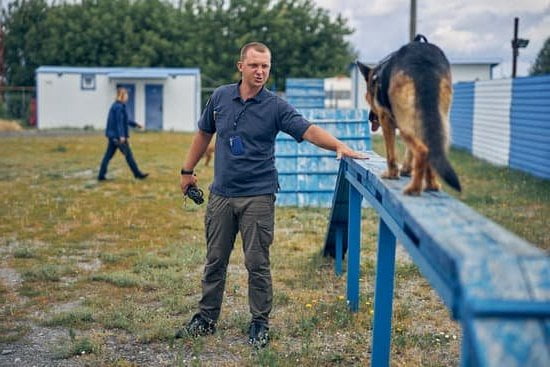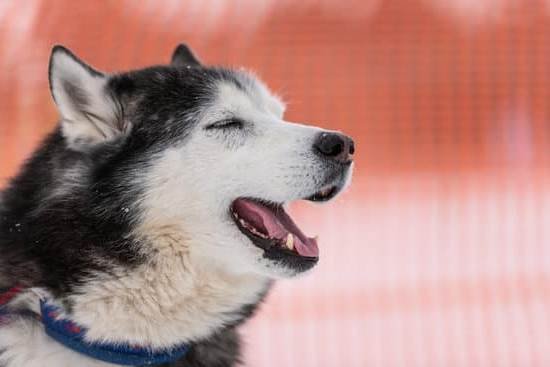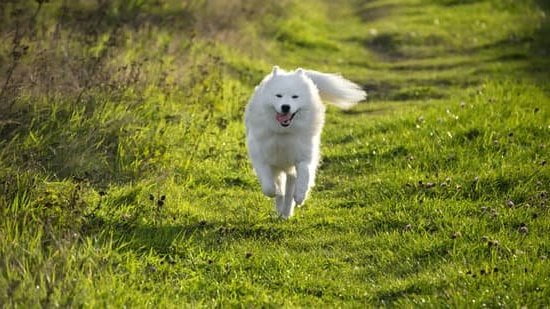Introduction
Training your dog to come is an incredibly useful and important skill for any pet owner. Not only does it provide a greater sense of security, but teaching your pup to reliably come when called is also an essential component of good behavior. By training your pup to respond to your call with a source of reward or praise attached, you’ll ensure that they will make it a habit to come when called in most situations.
Aside from the security and behavioral benefits, there are additional reasons that you should train your pup to come on command. For example, by teaching them the “come” command, you’re essentially laying a foundation for other commands like “sit” or “stay” which can be used for even more helpful skills. Your dog will also be able to enjoy additional freedom outside if they are properly trained; this way, you’ll be able to have peace of mind when letting them off-leash since they should respond appropriately when they start feeling curious or sense danger around them. Additionally, having such control over an animal of any size can help prevent potential disaster in scenarios like thunderstorms or fireworks displays; not only will you both feel comforted knowing that your furry friend is able to stay close without running away but it also diminishes their chances of getting into dangerous situations in general.
What Is Positive Reinforcement and How Does It Work?
Positive reinforcement is a type of reward-based training used to help our furry friends learn a desired behavior. With positive reinforcement, we reward an animal’s good behavior and ignore their bad behavior. So how does one go about training a dog to come with positive reinforcement? First, your pup needs to understand the command “come” by itself. This means that when you say it, he should immediately come running. To accomplish this, choose a special treat that only comes out for this command and practice it with your pup every day. Start by calling him from across the room and as soon as he starts moving towards you, immediately give him the treat. You can also employ the use of a leash while practicing so that they are required to move towards you in order to get the treat. Do this multiple times in different settings to get your pup familiar with the command everywhere so that no matter where he is, he will always come racing back when called!
Building a strong bond
Training your dog to come is one of the most important things you can do to ensure that they learn obedience and develop a strong bond with you. To do this, it’s essential to establish trust, secure leadership and use positive reinforcement.
Trust is developed when your dog has confidence in you as their pack leader. To create this sense of safety and security, focus on consistency. Each time your dog completes a command successfully, it reinforces their trust in you as their pack leader. You can also use verbal and physical cues such as clapping, giving a pat and using an upbeat voice when praising them for following instructions.
Secure leadership comes from setting the rules and boundaries clearly so that your pup knows what behaviour is expected from them. This could include expecting them to come when called, not jumping on people or going out in public without permission. Providing clear communication about what is acceptable will let them know who’s boss respectfully but firmly, making it easier for both of you in the long run.
Finally, the best way to reinforce good behaviour and encourage more desirable behaviours to your pup is by implementing positive reinforcement strategies such as treats or praise whenever they follow commands correctly. Make sure you provide rewards immediately after correct behaviour for maximum effectiveness of these strategies. Over time, your pup will begin to recognise what behaviour gains them rewards and start responding more quickly to commands that they have become familiar with!
Training Basics
The basic idea behind training your dog to come when called is to teach him a command — or cue — and pair it with a reward he finds highly motivating. An appropriate command should be firm yet rewarding; your tone will be an important factor in teaching your pet the desired behavior. Before you get started, decide on a special phrase like “Here!” or “Come!” that you’ll use each time you want your pup to come.
To ensure success, start with short training sessions and gradually extend them as your pup’s understanding and self-control improves. Begin by having your dog just sit and look at you for short periods of time, so he can practice focusing on you — this is especially true for dogs that have a hard time staying put. As soon as he does something correctly, give him a treat immediately and say the command word in an upbeat manner.
Continue reinforcing his desired behavior with rewards but also ensure that meaning is clear. If he’s not responding after several tries, reduce the distance between you two and make it easier for him to come without any confusion or distractions. Once he’s mastered sitting near you upon verbal command, start increasing distance between the two of you while using verbal cues such as “here” or “come.” Pairing plenty of praise when he obeys the command will reinforce the positive association to coming when called. When allowed, giving him interactive playtime outdoors can also be rewarding — toys such as tug ropes can help increase his motivation and excite him into coming back each time. Finally, always finish off each successful response with treats or other rewards – these should always occur after performing tasks correctly for better comprehension in understanding what comes next!
10 Actionable Steps for Training Your Dog to Come
Step 1: Establish a cue—using a word, gesture, or sound—to get your dog’s attention when you want them to come. The most popular choice is “Come!” but you can use anything your dog will recognize.
Step 2: Stand with your treat in one hand and your cue in the other, and ensure your dog is focused on you.
Step 3: While standing with your dog, give the cue for her to come (e.g., say “Come!”)
Step 4: Move away from your dog while simultaneously giving your cue (do not run!)
Step 5: When you are about 5 feet away, encourage them toward you by clapping and calling them with excitable energy.
Step 6: Supply praise or treats when they begin to come, so they know they are doing the right thing.
Step 7: As soon as they reach you, reinforce their success by rewarding them quickly with a treat or verbal praise. Keep sessions short – no more than five minutes of practice at a time to avoid overloading their capacity to learn effectively.
Step 8: Once your pooch has mastered coming when called at close range, gradually increase the distance of the exercise and add in more challenging environments such as parks or larger spaces as he progresses in his training.
Step 9: Every few weeks take a break from this training session; it is important for your pup to remember that coming when called isn’t always followed by other tasks such as sitting for example!
Step 10: Finally continue practising on a regular basis using positive reinforcement methods to build up trust between owner and pet & aid recall consistency even in distracting situations.
Setting Accurate Expectations
It is impossible to say exactly how long it will take to train your dog to come, as every dog learns at their own pace. Generally speaking, though, with consistent positive reinforcement and repetition, you should be able to teach your dog the basics of coming in 4-6 weeks. Socialization also plays an important role in teaching this skill – if your dog has not been previously exposed to a lot of people or situations, it could make the learning process more challenging.
To get started on training your dog to come, first you must pick out a command word or phrase that you want to use each time. This should be something short and simple that is easy for your pup to remember. Make sure that everyone who interacts with them knows the phrase so they can help reinforce it during training. It’s important that when commanding “Come!” there is no room for negotiation – meaning your pup should come running immediately when it’s called. You may have better success by connecting an enjoyable activity (like treats or playtime) afterward – this way, your pup gets rewarded for following directions. Allowing your puppy enough time (2-3 minutes max) off-leash outside (avoiding distractions) is another important part of getting comfortable with the ‘come’ command – using treats here can again help provide additional reinforcement and motivation too. As needed, contact a certified well-reviewed professional trainer if needed who can assist you further in establishing this behavior successfully!
Troubleshooting
Training your dog to come when called can be very rewarding, but it is also one of the toughest basic commands to teach. Despite your best efforts, there may be times when you’re training your pup and the desired outcome isn’t immediately achieved. It’s important to stay patient and remember that all dogs will learn at their own pace. When dealing with setbacks in training, there are a few things you can do to help ensure success:
1. Make sure your training environment is conducive for learning – Make sure that when you train your dog, the atmosphere is focused on positively reinforcing their behavior and reinforcing the command you are teaching. Eliminate any possible distractions such as loud noises or other animals and people around them, so their attention will solely focus on learning.
2. Be consistent – Consistency in the commands you use allow the dog to have an easier time understanding what is expected from them. Whenever giving a verbal command while training don’t use words they can easily confuse, such as “come here” or “over here”. Stick to using one word like “come” every single time so they can recognize it more easily when given again later on down the road.
3. Give positive reinforcement – As soon as your pup follows through on coming when called, make sure to give them some treats and plenty of praise for a job well done! This will help them realize that good behavior leads to rewards in our eyes which increases motivation for wanting to please us in future attempts of this exercise.
4. Take breaks – If you start feeling frustrated or overwhelmed during training sessions with your pup or if they appear tired, take a break and come back fresh later on in the day. Increasing both yours and the pups patience levels will only lead towards long-term progress down the road!
Conclusion
Training your dog to come can be an invaluable skill for you and your pet. By using positive reinforcement training techniques such as clicker training or treats, you can teach them a sense of trust and obedience in coming when called. Additionally, by establishing a verbal cue such as “come” or “here” will help your pet understand the command more easily. Aim for consistent practice for the best results, always completing with plenty of praise and rewards so that the command is associated with positive reinforcement. Doing this should help create a strong bond between you and your pup while helping them understand the importance of responding quickly when summoned. Training your dog to come not only has rewards for yourself but also makes them safer as they are less likely to wander off while keeping you, put in better control of their movements when needed.

Welcome to the blog! I am a professional dog trainer and have been working with dogs for many years. In this blog, I will be discussing various topics related to dog training, including tips, tricks, and advice. I hope you find this information helpful and informative. Thanks for reading!





